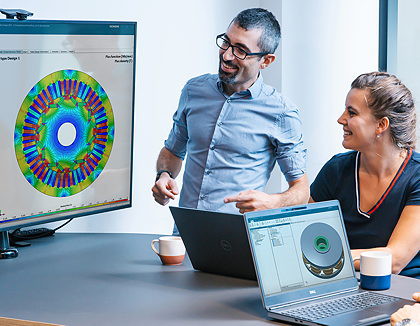“The electric vehicle industry is facing challenges from many directions – supply chain issues, the ability to scale and the pursuit of innovation driven by increasingly demanding customers,” explains Jean-Claude Ercolanelli, senior vice-president for simulation and test solutions at Siemens Digital Industries Software. “By adopting cutting-edge simulation capabilities to develop new products and technologies in shorter timescales than ever achieved, the EV industry can focus on delivering the innovation required to stay relevant in a rapidly-changing market.”
Because of their high power densities, axial-flux motors can extend EV ranges. But engineers using them face heat dissipation challenges because of their compact dimensions and complexity. There are also difficulties in accommodating the required air gap. Many developers are therefore turning to simulation to help cut development costs and times.
The new eDrive simulation software – part of Siemens’ Xcelerator portfolio – allows engineers to use parameterised templates and analytical modelling in the early stages of development, and then to continue working on their designs in 3D using FEA (finite element analysis) simulations when more complex investigations – such as advanced thermal interactions – are needed.
Siemens has also developed a smart virtual sensing capability that combines simulation with physical testing, allowing physical test teams to place virtual sensors in areas where physical sensors cannot be located. This allows “measurement of the unmeasurable” using reduced-order models with virtual sensors that run in real time alongside a physical test. The technique can combine data from physical strain gauges with the reduced-order model to compute loading conditions, enabling engineers to calculate results at the “unreachable” virtual sensor.

Siemens’ e-machine design software brings together electromagnetic and thermal simulation, helping to reduce reliance on physical prototypesImage: Siemens Digital Industries Software
Siemens: Twitter LinkedIn Facebook

